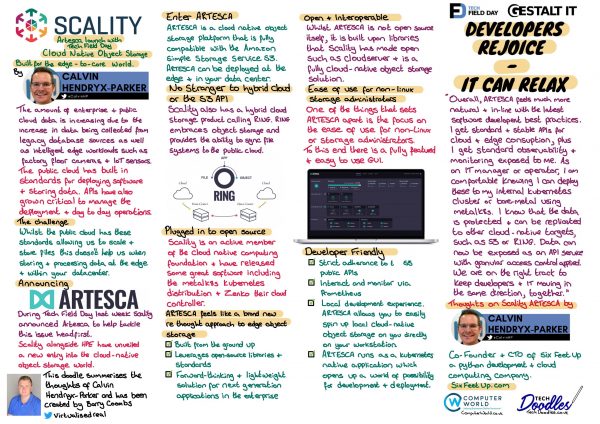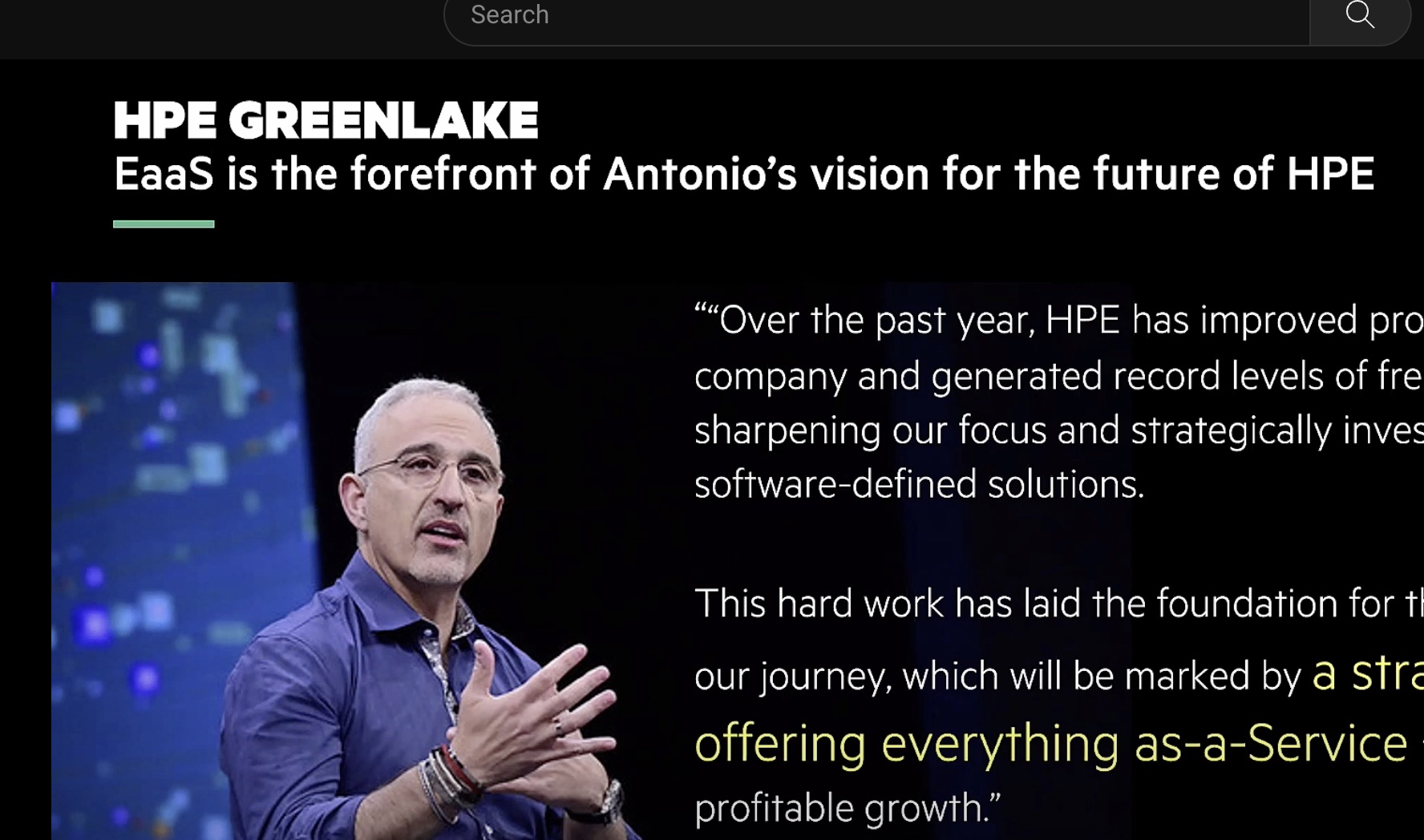The amount of enterprise and public cloud data is increasing almost exponentially as we collect files and data from sources such as legacy databases, factory floor cameras, and IoT sensor data. The beautiful part of the growth of the public cloud has been the creation of standards for deploying software and storing data. APIs have grown increasingly critical to manage the deployment and operation of resources.
However, while the public cloud is full of great solutions to scale and store files, it doesn’t solve the common issues around storing and processing this data at the edge or in your own data center. On April 27, 2021, I joined a special Tech Field Day event where Scality announced its initiative to tackle this issue headfirst.
Enter ARTESCA
Scality and Hewlett Packard Enterprise (HPE) unveiled a new entry into the cloud-native object storage world: ARTESCA (pron: art-tes-ka). ARTESCA is the Amazon Simple Storage Service (S3) compatible, cloud-native object store that you can run in your data center or at the edge. Scality is no stranger to the hybrid cloud or the S3 API. Their hybrid cloud storage product RING has embraced object storage and provides the ability to sync file systems to the public cloud.
Scality is also plugged in to open source. They are an active member of the Cloud Native Computing Foundation and have released some great software such as their metalk8s Kubernetes distribution and their cloud data controller, Zenko. ARTESCA feels like a brand new, re-thought approach to edge object storage. You can feel that it has been built from the ground up leveraging open-source libraries and standards. I’m a big fan of this approach and Scality’s decision to leave RING in place to handle legacy applications and deployment models. Throwing off those constraints allows Scality to benefit from the creation of a forward-thinking and lightweight solution for next-generation applications in the enterprise.
Open and Interoperable
While the ARTESCA product itself is not open source, it is built upon libraries that Scality has made open such as cloudserver, and created a fully cloud-native object storage solution. What sets this apart is the focus on the ease of use for non-Linux or storage administrators. It feels developer-friendly with its strict adherence to S3 public APIs and the ability to interact and monitor it via Prometheus. As if that wasn’t enough, they are also fully compatible with Amazon Web Services (IAM) access controls.

Another upside is the local development experience. ARTESCA allows you to easily spin up local cloud-native object storage on your workstation and develop against the same platform you will deploy into. Scality’s commitment to running the whole stack as a Kubernetes native application opens up a world of possibility for development and deployment. You won’t need to install yet another vendor’s software development kit (SDK) and run a local instance of the service; you can work right alongside your other container development environment.
Developers Rejoice — IT can Relax
Overall, ARTESCA feels much more natural and in-line with the latest software development best practices. I get standard and stable APIs for cloud and edge consumption, plus I get standard observability and monitoring exposed to me. As an IT Manager or Operator, I am comfortable knowing I can deploy these to my internal Kubernetes clusters or bare-metal using metalk8s. I know that the data is protected and can be replicated to other cloud-native targets, such as S3 or RING. Data can now be exposed as an API service with granular access control applied. We are on the right track to keep developers and IT moving in the same direction, together.





